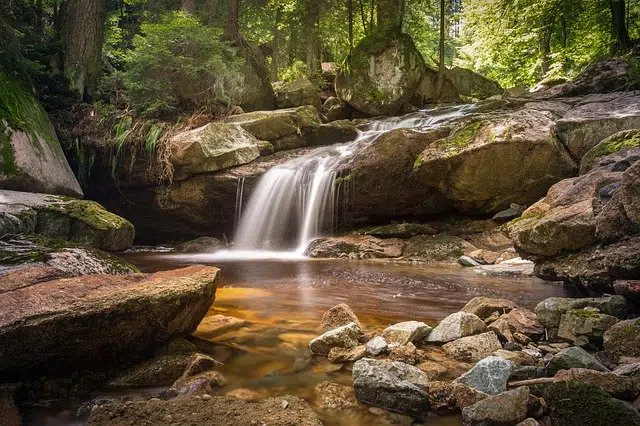
A slope through which water flows is called a slope.
First of all, what we have to do is determine the etymological origin of the word vertiente that concerns us now. Specifically, we have to emphasize that it is found in Latin and more precisely in the word pour .
A slope is a slope or place through which water flows . It is usually an inclined topographic surface, which is located between high points (such as summits , peaks or ridges) and low points.
Characteristics of a slope
The slope can have different profiles, according to the action of erosion and the rocky characteristics of the terrain . The height, slope, surface, vegetation and sun exposure vary according to each slope.
Due to their geographical location between mountains, the valleys usually have slopes. It is common for rivers and streams to flow along the slopes and allow the populations in the area to take advantage of the water.
The hydrographic basins
A catchment basin (also known as a hydrographic basin) is a set of catchments that drain through the same element (such as a river , a lake or a sea ). These basins can be divided into three sections: the upper basin (the place where the river or the source of water in question is born), the middle basin (where there is a balance between the solid material carried by the current and the water from the slope) and the lower basin (the material extracted from the upper basin is deposited in the tailings cone).
Among the types of basins, the endorheic basins stand out (which flow into lakes or lagoons with no outlet to the sea), the exorheic basins (which drain their waters to the ocean) and the areal basins (the waters filter or evaporate before entering the a drainage network).
It should be noted that the set of drainage basins that drain into the same sea is known as a hydrographic drainage basin .

A side can be a point of view, a perspective or a current.
Slopes in Spain
A perfect example of this is the Mediterranean side of Spain. That is, the set of rivers and tributaries that end up in the well-known Mediterranean Sea. In the east and southeast of the Iberian Peninsula there is one that is identified by being made up of rivers that are generally quite short, with the Ebro being the only exception.
However, in Spain there are other equally important watersheds, such as the Cantabrian, located in the north of the country and made up of rivers from Galicia as well as the Basque Country or Cantabria, and the Atlantic. This is located in the west of the nation and is the most important of the nation as it occupies more than 60% of the territory.
At the European level, it is worth highlighting other very significant ones, such as the case of the Black Sea slope or the Arctic Ocean slope. The first of them is supported by the Diéper, the Dniester and the famous Danube river.
Other uses of the term
It is interesting to establish that the term spring waters also exists. It is used to refer to various issues: to those waters that come down from certain mountains or also to those that pour off the roofs as a result of the rains and that, therefore, descend to the ground.
Vertiente, finally, can refer to a point of view or aspect . For example: “This thinker is part of the harshest side of communism.”
